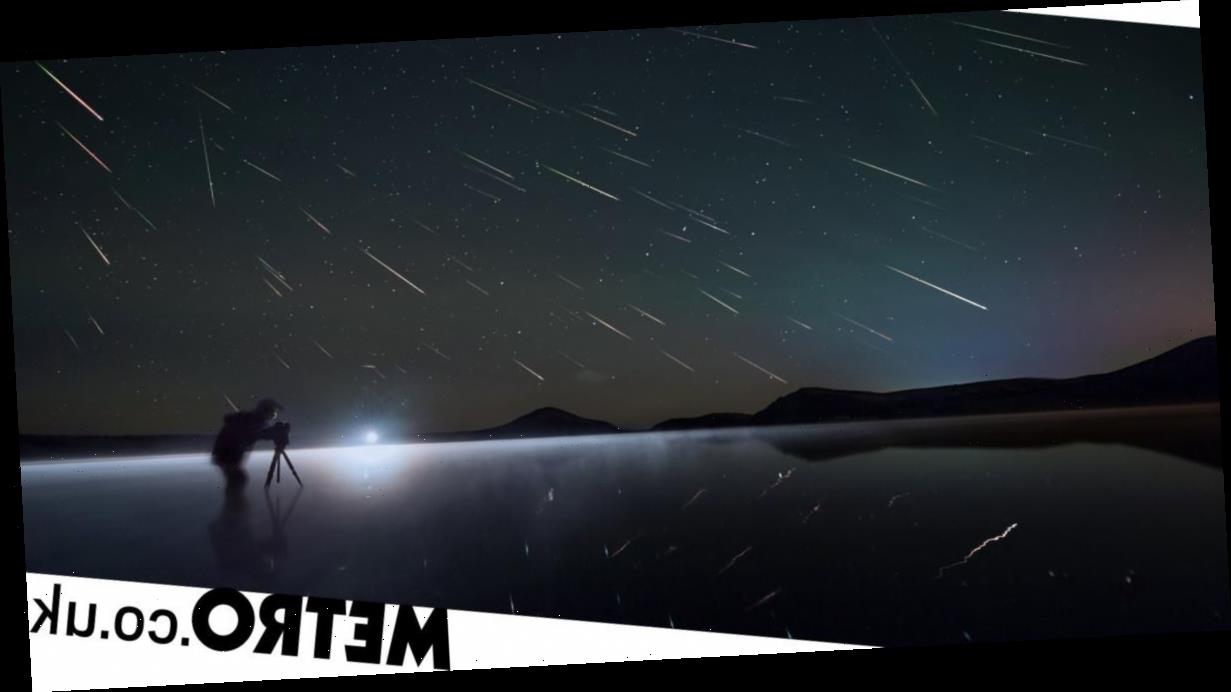The Orionids meteor shower is one of the most spectacular displays in the astronomy calendar.
Occurring every year in the autumn, the Orionids is caused by the Earth moving through the debris left by Halley’s Comet.
The meteor shower is set to peak later this week, giving UK astronomers their best chance of seeing up to 25 shooting stars per hour.
Providing the weather stays clear – and you can stay warm – you won’t need any special equipment to enjoy the meteor shower, just keep your eyes peeled.
Orionids are named after Orion, because the meteors seem to emerge or radiate from the same area in the sky as the constellation.
Anna Ross, an astronomer at the Royal Observatory Greenwich, explained: ‘Meteors will be visible all over the sky but they will appear to originate from close to the star Betelgeuse in the constellation of Orion, which will be in the east of the sky during that peak time.
As ever, the best way to see them is to get as far away from light pollution as possible and just look upwards.
Orionids meteor shower 2020: When to watch the meteor shower
Although visible throughout late October, the best time to catch the Orionids is on the evening of Wednesday, October 21.
After sunset the meteors could start to become visible, but your best chance to see them will be after 10pm. The official ‘peak time’ for spotting meteors is about 11.30pm.
If you’re feeling particularly brave, you could even get up very early on the morning of October 22 as the night will be darkest in the early hours before sunrise.
You will need to look upwards and eastwards into the night sky – near the constellation of Orion – for the best chance of spotting the meteors.
‘The Orionids, which peak during mid-October each year, are considered to be one of the most beautiful showers of the year,’ explained Nasa
‘Orionid meteors are known for their brightness and for their speed. These meteors are fast—they travel at about 148,000 mph (66 km/s) into the Earth’s atmosphere.
‘Fast meteors can leave glowing “trains” (incandescent bits of debris in the wake of the meteor) which last for several seconds to minutes. Fast meteors can also sometimes become fireballs.’
Orionids meteor shower 2020: What causes the meteor shower?
The Orionids are caused by the Earth’s orbit bringing it into contact with debris from Halley’s comet.
Ms Ross said: ‘As both the Earth and Halley’s comet have elliptical orbits around the Sun, these two intersect twice per year. This causes not only the Orionids, but also the Eta Aquarids meteor shower in May.’
Halley takes around 76 years to make a complete revolution around the Sun. It will next be visible from Earth in 2061.
Nasa explained: “Each time that Halley returns to the inner solar system its nucleus sheds ice and rocky dust into space. The dust grains eventually become the Orionids in October and the Eta Aquarids in May if they collide with Earth’s atmosphere.’
Source: Read Full Article


